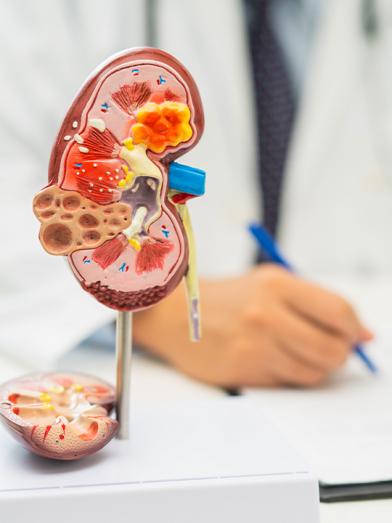Charcot's Joint
Charcot's Joint, also called neuropathic arthropathy, occurs when a joint breaks down because of a problem with the nerves. This type of neuropathy most often occurs in the foot.
In a typical case of Charcot's Joint, the foot has lost most sensation. The person no longer can feel pain in the foot and loses the ability to sense the position of the joint. Also, the muscles lose their ability to support the joint properly. The foot then becomes unstable, and walking just makes it worse.
An injury, such as a twisted ankle, may make things even worse. Joints grind on bone. The result is inflammation, which leads to further instability and then dislocation. Finally, the bone structure of the foot collapses. Eventually, the foot heals on its own, but because of the breakdown of the bone, it heals into a deformed foot.
People at risk for Charcot's Joint are those who already have neuropathy. They should be aware of symptoms such as:
- swelling
- redness
- heat
- strong pulse
- insensitivity of the foot.
Early treatment can stop bone destruction and aid healing.
Cranial neuropathy
Cranial neuropathy affects the 12 pairs of nerves that are connected with the brain and control sight, eye movement, hearing, and taste.
Most often, cranial neuropathy affects the nerves that control the eye muscles. The neuropathy begins with pain on one side of the face near the affected eye. Later, the eye muscle becomes paralyzed. Double vision results. Symptoms of this type of neuropathy usually get better or go away within 2 or 3 months.
Compression mononeuropathy
Compression mononeuropathy occurs when a single nerve is damaged. It is a fairly common type of neuropathy. There seem to be two kinds of damage. In the first, nerves are squashed at places where they must pass through a tight tunnel or over a lump of bone. Nerves of people with diabetes are more prone to compression injury. The second kind of damage arises when blood vessel disease caused by diabetes restricts blood flow to a part of the nerve.
Carpal tunnel syndrome is probably the most common compression mononeuropathy. It occurs when the median nerve of the forearm is compressed at the wrist. Symptoms of this type of neuropathy include numbness, swelling, or prickling in the fingers with or without pain when driving a car, knitting, or resting at night. Simply hanging your arm by your side usually stops the pain within a few minutes. If the symptoms are severe, an operation can give complete relief from pain.
Femoral neuropathy
Femoral neuropathy occurs most often in people with type 2 diabetes. A pain may develop in the front of one thigh. Muscle weakness follows, and the affected muscles waste away. A different kind of neuropathy that also affects the legs is called diabetic amyotrophy. In this case, weakness occurs on both sides of the body, but there is no pain. Doctors do not understand why it occurs, but blood vessel disease may be the cause.
Focal neuropathy
Focal Neuropathy affects a nerve or group of nerves causing sudden weakness or pain. It can lead to double vision, a paralysis on one side of the face called Bell's palsy, or a pain in the front of the thigh or other parts of the body.
Thoracic/lumbar radiculopathy
Thoracic or lumbar radiculopath is another common mononeuropathy. It is like femoral neuropathy, except that it occurs in the torso. It affects a band of the chest or abdominal wall on one or both sides. It seems to occur more often in people with type 2 diabetes. Again, people with this neuropathy get better with time.
Unilateral foot drop
Unilateral foot drop is when the foot can't be picked up. It occurs from damage to the peroneal nerve of the leg by compression or vessel disease. Foot drop can improve.





